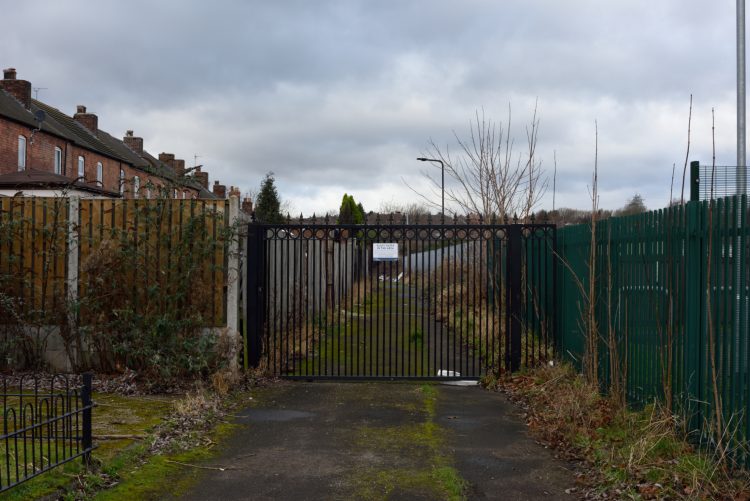Reflections on how Conversations That Matter help us stick together in challenging times, from National Development Worker Jill Mann.
Jill builds connections with Who is Your Neighbour?'s national partners - and enjoyed engaging with others at the Belong Conference.
As Jill talked with new and old friends - including Lisa Cumming, from the Quakers in Britain - about our work, a few themes came to mind that connect our work with what it means to 'belong':
- martial arts
- boundaries with doors
- curiosity
- stories that ‘bridge’.

WiYN? and Aikido
Holding difficult conversations in South Yorkshire communities is what Who is Your Neighbour?’ does. It is our way of helping people to feel they belong and can get along.
Our work reminds Jill of the martial art, Aikido:
Who is Your Neighbour? is an Aikido warrior. We use the energy in the room. We don’t say, ‘You’re wrong’ or ‘You’re racist’. We explore the energy - of hatred, fear, sadness….
Aikido uses and goes with the Other person’s energy:
It’s difficult. Incredibly disciplined. But it avoids harm and looks for win-wins.
WiYN? conversations can overflow with energy - and they can be difficult. Participants might express anger. We invite honesty and value what people bring, rather than shutting it down, because:
The idea is not to change someone’s point of view.
The aim, instead, is to create an opportunity for genuine curiosity and exploration - while checking that people are ok with what is happening. We hold the space for a conversation that matters.
WiYN? and Boundaries with Doors
When Who Is Your Neighbour? holds conversations, we want every participant to feel that they belong, and we keep checking, 'Is everyone alright?’. Difficult topics often arise and there is balance to strike between protecting people and aiming for openness and resilience.
We want to be able to accommodate the new, unexpected and difficult because we think there is a long-term risk in shutting those things down.
Jill says:
We all need to belong, to connect.
But, once you ‘belong’ to a group, it feels cosy. How open is it to other people?
Yes, we can put a boundary around something - but does it have doors?
Boundaries can get rigid when life is tough. And it is tough at the moment. Belong conference speaker Jo Broadwood described Britain as being in ‘permacrisis’. There is fear about dwindling resources, loss of space and freedom. There is also a deeper sense of threat that can be overwhelming:
It is about taking my stuff - and also about that Other person being a threat.
We can then either humanise them, and live with difference. Or we can dehumanise, which leads to violence.
Humanising requires effort.
WiYN? and Curiosity
Jill heard at the conference that kindness, respect and openness help create communities where everybody feels they belong, and that these things only get noticed when they’re missing.
Openness is related to curiosity, and both are vital ingredients in a WiYN? conversation:
We allow, or create, conditions where people can become curious about why they believe what they believe.
They get some space to think about that from different angles.
Things can then shift.
When faced with comments or opinions that are difficult to hear, our facilitators might invite a spirit of curiosity by asking if anyone else in the conversation has a different experience, or wants to add something.
Those invitations can open up a group exploration about the variety of things participants think and feel - even when everybody present has a lot in common.
Sometimes, there are ‘light-bulb moments’; sometimes, transformation takes place.
Stories as Bridges
Belong conference speaker, john a powell, talked about the choices we all have when we tell stories. We can choose stories that ‘break’ - or blame; we can also choose stories that ‘bridge’.
Lisa Cumming adds:
There is one story where difference is a threat - ‘they’ are taking away our values and culture.
There is another story where difference is a bridge - the world is changing; we don’t need to be fearful. We can turn towards each other; learn to listen to each other.
Who is Your Neighbour? invites people to listen to the stories they are telling about themselves and others. We are based in South Yorkshire and a lot of our grass-roots work is done in less well-off communities where most people are white - but people in every community are telling stories that bridge and stories that blame.
Jill says:
There might be different tones. There might be more or less overt language, more or fewer euphemisms, more or less swearing.
But the stories are there.
We hope that Who is Your Neighbour? conversations create spaces where all stories belong and can be shared. We invite people to notice the choices they make as they tell their stories, and to wonder why.
WiYN? and Aikido
Holding difficult conversations in South Yorkshire communities is what Who is Your Neighbour?’ does. It is our way of helping people to feel they belong and can get along.
Our work reminds Jill of the martial art, Aikido:
Who is Your Neighbour? is an Aikido warrior. We use the energy in the room. We don’t say, ‘You’re wrong’ or ‘You’re racist’. We explore the energy - of hatred, fear, sadness….
Aikido uses and goes with the Other person’s energy:
It’s difficult. Incredibly disciplined. But it avoids harm and looks for win-wins.
WiYN? conversations can overflow with energy - and they can be difficult. Participants might express anger. We invite honesty and value what people bring, rather than shutting it down, because:
The idea is not to change someone’s point of view.
The aim, instead, is to create an opportunity for genuine curiosity and exploration - while checking that people are ok with what is happening. We hold the space for a conversation that matters.
When Who Is Your Neighbour? holds conversations, we want every participant to feel that they belong, and we keep checking, 'Is everyone alright?’. Difficult topics often arise and there is balance to strike between protecting people and aiming for openness and resilience.
We want to be able to accommodate the new, unexpected and difficult because we think there is a long-term risk in shutting those things down.
Jill says:
We all need to belong, to connect.
But, once you ‘belong’ to a group, it feels cosy. How open is it to other people?
Yes, we can put a boundary around something - but does it have doors?
Boundaries can get rigid when life is tough. And it is tough at the moment. Belong conference speaker Jo Broadwood described Britain as being in ‘permacrisis’. There is fear about dwindling resources, loss of space and freedom. There is also a deeper sense of threat that can be overwhelming:
It is about taking my stuff - and also about that Other person being a threat.
We can then either humanise them, and live with difference. Or we can dehumanise, which leads to violence.
Humanising requires effort.
Jill heard at the conference that kindness, respect and openness help create communities where everybody feels they belong, and that these things only get noticed when they’re missing.
Openness is related to curiosity, and both are vital ingredients in a WiYN? conversation:
We allow, or create, conditions where people can become curious about why they believe what they believe.
They get some space to think about that from different angles.
Things can then shift.
When faced with comments or opinions that are difficult to hear, our facilitators might invite a spirit of curiosity by asking if anyone else in the conversation has a different experience, or wants to add something.
Those invitations can open up a group exploration about the variety of things participants think and feel - even when everybody present has a lot in common.
Sometimes, there are ‘light-bulb moments’; sometimes, transformation takes place.
Belong conference speaker, john a powell, talked about the choices we all have when we tell stories. We can choose stories that ‘break’ - or blame; we can also choose stories that ‘bridge’.
Lisa Cumming adds:
There is one story where difference is a threat - ‘they’ are taking away our values and culture.
There is another story where difference is a bridge - the world is changing; we don’t need to be fearful. We can turn towards each other; learn to listen to each other.
Who is Your Neighbour? invites people to listen to the stories they are telling about themselves and others. We are based in South Yorkshire and our grass-roots work is done in less well-off communities where most people are white - but people in every community are telling stories, all the time.
Jill says:
There might be different tones. There might be more or less overt language, more or fewer euphemisms, more or less swearing.
But the stories are there.
We hope that Who is Your Neighbour? conversations create spaces where all stories belong and can be shared. We invite people to notice the choices they make as they tell their stories, and to wonder why.
